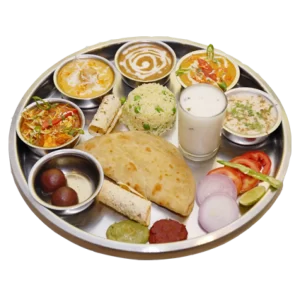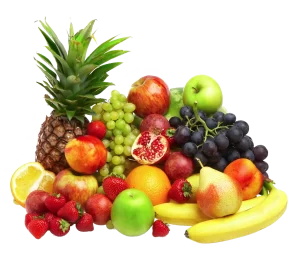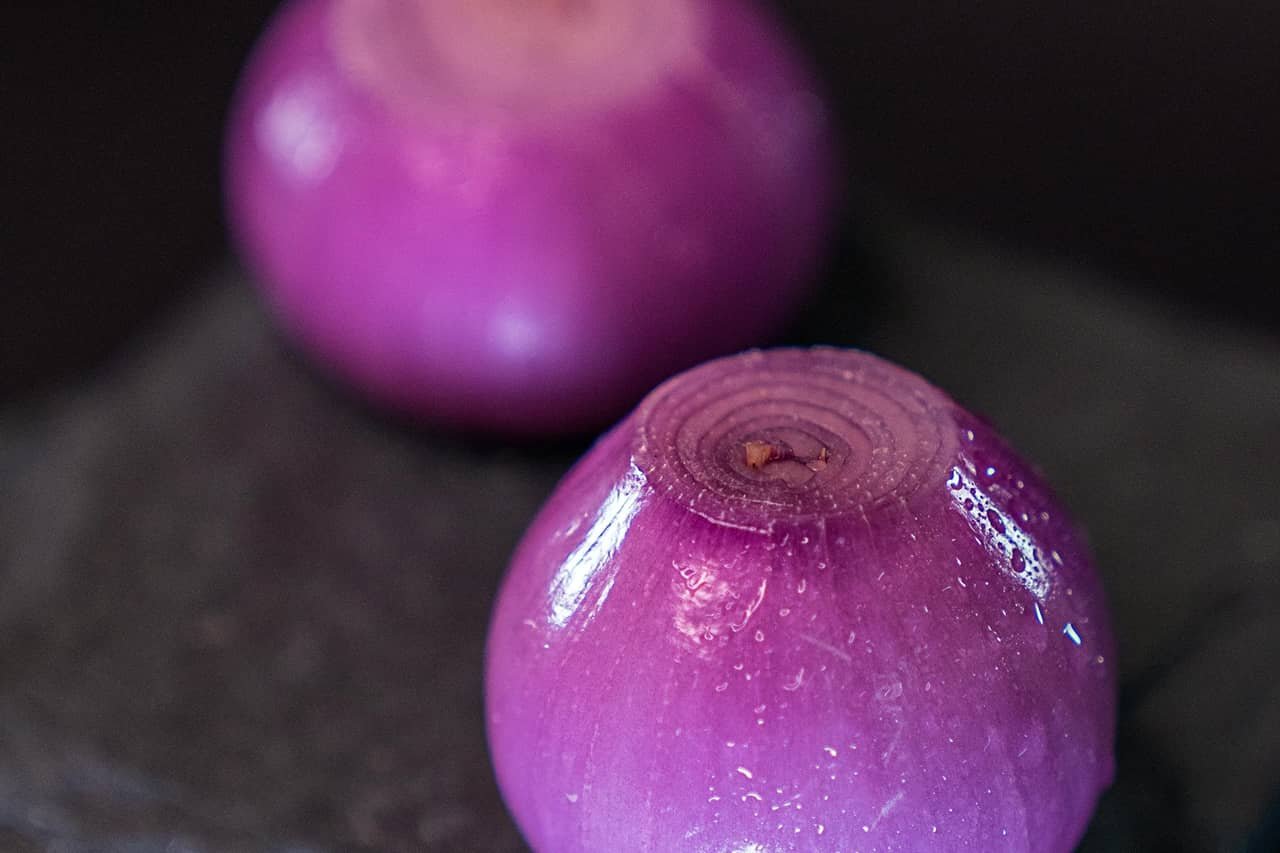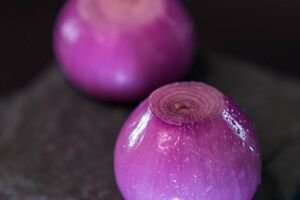9 Healthy Food Habits For Kids Growth
In India, promoting healthy food habits for kids is of paramount importance. In today’s fast-paced world, it is vital to instill good eating habits in children to promote their well-being. Proper nutrition during childhood serves as a strong foundation for a healthy and fulfilling life. As parents and caregivers, it is our responsibility to cultivate positive eating habits that will benefit kids in the long run. This article presents 11 essential eating habits that can help children develop a robust foundation for overall health and wellness.

1. Balanced Breakfast
A balanced breakfast plays a vital role in supporting the growth and development of children. Here’s how it helps kids in their overall growth:
Provides Essential Nutrients
A. Proteins for Muscle Growth
- Proteins are essential for building and repairing muscles, which is crucial for growing kids.
- Include sources like eggs, yogurt, and lean meats to ensure an adequate protein intake.
B. Calcium for Strong Bones and Teeth
- Breakfast foods like milk and fortified cereals provide calcium necessary for developing strong bones and teeth.
- Calcium is particularly vital during the growth spurts in childhood and adolescence.
Sustained Energy Throughout the Day
A. Complex Carbohydrates for Energy
- Whole grains like oats and whole wheat bread release energy slowly, providing a steady source of fuel for physical and mental activities.
- This sustained energy helps kids concentrate better in school and engage actively in extracurricular activities.
B. Fruits and Vegetables for Vitamins and Minerals
- Fruits and vegetables are rich in vitamins and minerals necessary for various bodily functions and growth.
- Incorporate a variety of colorful fruits and vegetables to ensure a broad spectrum of nutrients.
Supports Brain Development
A. Omega-3 Fatty Acids for Brain Health
- Foods like walnuts and flaxseeds are rich in omega-3 fatty acids, which are essential for brain development and cognitive function.
- Including these in breakfast can enhance memory and learning abilities in children.
B. Balanced Blood Sugar Levels
- A balanced breakfast helps maintain stable blood sugar levels, preventing energy crashes and mood swings.
- Stable blood sugar levels are crucial for focus and concentration in school.
Encourages Healthy Eating Habits
A. Teaches the Importance of Breakfast
- Establishing a routine of having a balanced breakfast teaches kids the importance of regular meals.
- It instills healthy eating habits that they are likely to carry into adulthood.
B. Reduces Unhealthy Snacking
- Children who have a satisfying breakfast are less likely to indulge in unhealthy snacks later in the day.
- A balanced breakfast curbs cravings and promotes better food choices throughout the day.
In summary, a balanced breakfast for kids is not just about filling their stomachs; it’s about providing the necessary building blocks for their physical and mental development. By ensuring a nutritious morning meal, parents and caregivers set the stage for a healthy lifestyle and a strong foundation for their children’s growth and well-being.
2. How Consistent Meals Support Kids’ Growth?
Consistent meals play a crucial role in supporting the growth and development of children. Establishing regular eating patterns not only ensures that kids receive adequate nutrition but also has a profound impact on their overall health and well-being. Here’s how consistent meals contribute to kids’ growth:
Stable Energy Levels
A. Balanced Blood Sugar
- Consistent meals help maintain stable blood sugar levels throughout the day.
- This steadiness in energy levels supports active play, learning, and concentration, essential for growing children.
B. Preventing Energy Lows
- Regular meals prevent energy crashes, ensuring kids have sustained energy to engage in physical activities and focus on academics.
Optimal Nutrient Intake
A. Complete Nutrition
- Consistent meals allow children to receive a variety of nutrients from different food groups.
- A well-rounded diet supports the development of bones, muscles, and the immune system.
B. Essential Micronutrients
- Regular meals provide essential vitamins and minerals necessary for various bodily functions.
- Micronutrients like iron, calcium, and vitamin D are crucial for growth and development during childhood and adolescence.
Healthy Weight Management
A. Preventing Overeating
- Consistent meal times help regulate appetite and prevent excessive eating.
- Children who have regular meals are less likely to overeat or indulge in unhealthy snacks, promoting healthy weight management.
B. Establishing Healthy Habits
- Regular meals teach kids about portion control and mindful eating.
- By understanding their body’s hunger and fullness cues, children are more likely to maintain a healthy weight as they grow older.
Emotional Well-Being
A. Reducing Stress and Anxiety
- Predictable meal times provide a sense of security and routine for children.
- Reduced stress and anxiety contribute to better emotional well-being, fostering a positive attitude towards food and eating.
B. Family Bonding
- Shared meals create opportunities for family bonding and communication.
- Positive mealtime experiences promote a healthy relationship with food, enhancing children’s overall emotional health.
Consistent meals are not just about feeding children; they are about nourishing their growth, both physically and emotionally. By providing regular, balanced meals, parents and caregivers lay the foundation for a lifetime of healthy eating habits. These habits not only support children’s growth during their formative years but also empower them to lead healthier, happier lives in the long run.
Frequently Asked Questions (FAQs)
1. Why is it important for kids to have meals at the same time every day?
Having meals at consistent times regulates children’s appetite, energy levels, and emotional well-being. It provides stability and routine, promoting healthy eating habits.
2. How can parents ensure their children have consistent meals despite busy schedules?
Planning and preparation are key. Parents can pre-pack nutritious snacks and meals, involve children in meal planning, and establish a regular mealtime routine, even on busy days.
3. Are there specific foods that are essential for growing children?
A balanced diet comprising fruits, vegetables, whole grains, lean proteins, and dairy products provides essential nutrients for growing children. Encourage a variety of foods to ensure complete nutrition.
4. What role do consistent meals play in academic performance?
Stable energy levels resulting from consistent meals positively impact concentration, focus, and cognitive function. Children are better able to engage in learning, leading to improved academic performance.
5. How can parents encourage healthy eating habits in children through consistent meals?
Parents can involve children in meal preparation, offer a variety of nutritious foods, and create a positive mealtime environment. Consistency and positive reinforcement promote healthy eating habits in kids.
3. How Fruits and Vegetables Aid in Kids’ Growth?
Fruits and vegetables are nature’s powerhouse of essential nutrients, and they play a vital role in the growth and development of children. Packed with vitamins, minerals, fiber, and antioxidants, these colorful foods offer a plethora of benefits that contribute to a child’s overall well-being. Let’s explore how incorporating fruits and vegetables into kids’ diets supports their growth:
Rich Source of Vitamins and Minerals
A. Vitamin C for Immunity
- Citrus fruits like oranges and strawberries are rich in vitamin C, boosting the immune system and promoting faster healing of wounds.
- Adequate vitamin C supports the body’s ability to fight infections and illnesses, ensuring uninterrupted growth.
B. Calcium for Strong Bones and Teeth
- Vegetables like broccoli and dairy products provide calcium, essential for developing strong bones and teeth in growing children.
- Calcium-rich foods contribute to proper bone density, reducing the risk of fractures and bone-related issues.
High Fiber Content for Digestive Health
A. Preventing Constipation
- Fruits and vegetables are excellent sources of dietary fiber, aiding in smooth digestion and preventing constipation.
- Regular bowel movements are crucial for kids’ comfort and overall health, ensuring they can focus on their activities without discomfort.
B. Maintaining a Healthy Weight
- Fiber-rich foods provide a feeling of fullness, preventing overeating and promoting healthy weight management in children.
- A balanced weight is essential for overall growth and reduces the risk of obesity-related health problems.
Antioxidants for Cellular Health
A. Protecting Cells from Damage
- Berries, spinach, and carrots are packed with antioxidants that protect cells from damage caused by free radicals.
- Antioxidants contribute to the overall well-being of children by reducing the risk of chronic diseases and supporting healthy growth.
B. Improving Skin Health
- Vitamins A and E found in fruits and vegetables contribute to healthy skin, reducing the occurrence of skin issues in children.
- Clear and nourished skin boosts a child’s confidence and enhances their overall sense of well-being.
Encouraging Healthy Eating Habits
A. Variety in the Diet
- Introducing a variety of colorful fruits and vegetables encourages diverse eating habits from an early age.
- Exposure to different flavors and textures fosters an appreciation for wholesome foods, making it more likely for kids to maintain healthy eating habits as they grow older.
B. Positive Impact on Mental Health
- Nutrient-rich diets, including plenty of fruits and vegetables, have been linked to better mental health in children.
- A well-nourished brain is essential for cognitive development, emotional stability, and overall happiness.
Fruits and vegetables are not just food items; they are essential contributors to a child’s growth journey. By incorporating a colorful array of fruits and vegetables into their diets, parents and caregivers provide children with the building blocks they need to thrive physically, mentally, and emotionally. From supporting their immune system to encouraging healthy eating habits, these natural wonders play a pivotal role in shaping a child’s future health and well-being. Encouraging children to enjoy a variety of fruits and vegetables from an early age sets the stage for a lifetime of good health and vitality.
4. How Whole Grain Foods Boost Kids’ Growth and Development?
Whole grains are a fundamental component of a balanced diet, and they play a significant role in supporting the growth and development of children. Unlike refined grains, whole grains retain all parts of the grain, including the bran, germ, and endosperm, ensuring that valuable nutrients are not lost during processing. Incorporating whole grain foods into kids’ diets provides a range of benefits that are essential for their overall well-being. Let’s explore how whole grain foods contribute to the growth of children:
Rich in Essential Nutrients
A. Dietary Fiber for Digestive Health
- Whole grains, such as brown rice and whole wheat, are excellent sources of dietary fiber.
- Fiber aids digestion, prevents constipation, and promotes a healthy gastrointestinal system, ensuring kids can absorb essential nutrients effectively.
B. B Vitamins for Energy
- Whole grains contain B vitamins like niacin, thiamin, and riboflavin, which are crucial for converting food into energy.
- Adequate B vitamins support physical activities, helping children stay active and energetic throughout the day.
Steady Energy Release
A. Complex Carbohydrates for Sustained Energy
- Whole grains provide complex carbohydrates that release energy gradually, preventing energy spikes and crashes.
- This sustained energy is vital for children’s growth, supporting their focus, concentration, and active lifestyles.
B. Proteins for Muscle Development
- Whole grains offer a moderate amount of protein, which is essential for muscle development and repair.
- Combined with other protein sources, whole grains contribute to the overall growth of lean muscle mass in children.
Supports Brain Health
A. Omega-3 Fatty Acids for Cognitive Function
- Certain whole grains, like chia seeds and flaxseeds, contain omega-3 fatty acids, essential for brain health and cognitive function.
- Omega-3 fatty acids support memory, learning, and concentration, enhancing children’s academic and extracurricular performance.
B. Antioxidants for Neuroprotection
- Whole grains provide antioxidants that protect brain cells from oxidative stress, promoting optimal brain function.
- A healthy brain is crucial for children’s cognitive development and overall intelligence.
Promotes Healthy Weight
A. Feelings of Fullness
- The fiber content in whole grains promotes feelings of fullness and reduces overall calorie intake.
- Children who consume whole grains are less likely to overeat, supporting healthy weight management and preventing childhood obesity.
B. Balanced Blood Sugar Levels
- Whole grains help regulate blood sugar levels, preventing sudden spikes and crashes.
- Stable blood sugar levels are essential for maintaining a healthy weight and reducing the risk of type 2 diabetes.
Whole grain foods are nutritional powerhouses that are indispensable for children’s growth and development. By incorporating whole grains into their diets, parents and caregivers provide children with essential nutrients, sustained energy, and support for their physical and mental well-being. From promoting digestive health to enhancing brain function, whole grain foods are key contributors to a child’s overall growth journey. Encouraging kids to enjoy a variety of whole grain foods ensures they receive the vital nutrients needed to thrive and sets the foundation for a lifetime of good health.
5. Importance of Drinking Water in Supporting Kids’ Growth
7. Avoiding Overeating Is Vital for Kid’s Ideal Growth
Avoiding overeating is essential for ensuring the ideal growth of children. While it’s natural for kids to have hearty appetites, excessive food intake can lead to a range of health issues and hinder their physical and emotional development. Here’s why it’s crucial to instill healthy eating habits and prevent overeating for the optimal growth of kids:
Maintains Healthy Weight
A. Prevents Childhood Obesity
- Overeating often leads to excessive calorie intake, which can result in weight gain and childhood obesity.
- Maintaining a healthy weight is vital for a child’s growth, reducing the risk of obesity-related health problems and ensuring overall well-being.
B. Supports Physical Development
- Healthy weight management allows for proper physical development, ensuring that bones, muscles, and organs grow at a balanced rate.
- Overeating can strain the body and impact the natural progression of physical growth.
Promotes Balanced Nutrition
A. Prevents Nutrient Imbalances
- Overeating of certain foods may lead to imbalances in nutrient intake.
- A diverse and balanced diet is essential for acquiring all the necessary vitamins, minerals, and proteins needed for growth and development.
B. Encourages Variety in Diet
- Avoiding overeating allows room for a variety of foods, including fruits, vegetables, whole grains, and lean proteins.
- A varied diet ensures that children receive a broad spectrum of nutrients, fostering optimal growth and overall health.
Prevents Digestive Issues
A. Aids Digestion
- Overeating can overwhelm the digestive system, leading to discomfort, bloating, and indigestion.
- Proper digestion is essential for nutrient absorption, ensuring that the body receives the maximum benefit from the foods consumed.
B. Reduces the Risk of Gastrointestinal Problems
- Regular overeating can increase the risk of gastrointestinal issues, including acid reflux and gastritis.
- Preventing overeating promotes a healthy digestive tract, supporting ideal growth and well-being.
Fosters Positive Eating Habits
A. Encourages Mindful Eating
- Teaching children to recognize hunger and fullness cues encourages mindful eating.
- Mindful eating fosters a healthy relationship with food, preventing emotional or stress-related overeating, and promoting a positive body image.
B. Reduces Emotional Eating
- Overeating can sometimes be linked to emotional eating, where children use food to cope with emotions.
- Encouraging open communication and teaching alternative coping strategies helps children manage emotions without resorting to overeating.
Avoiding overeating is a fundamental aspect of promoting a child’s ideal growth. By teaching children about portion control, mindful eating, and the importance of balanced nutrition, parents and caregivers empower them to make healthy food choices. These habits not only support physical growth but also contribute to emotional well-being and a positive self-image. By fostering a healthy relationship with food from an early age, parents set the foundation for a lifetime of good health, ensuring that their children grow up strong, confident, and resilient.
8. Eating While Watching TV or Mobile Must Be Avoided
Eating while watching TV or using a mobile device has become a common habit, especially among children. However, this seemingly harmless activity can have significant consequences on a child’s health and overall well-being. Here are several reasons why parents and caregivers should discourage kids from eating while glued to screens:
Mindless Eating
A. Lack of Awareness
- When kids are engrossed in a screen, they are less aware of the quantity and quality of food they are consuming.
- Mindless eating often leads to overeating, as children may not recognize when they are full, contributing to unhealthy eating habits.
B. Reduced Satiety
- Studies show that people tend to eat more when distracted by screens, as they don’t register feelings of fullness.
- Kids consuming snacks while watching TV or using a mobile device are more likely to consume larger portions, leading to excess calorie intake.
Impact on Nutrition
A. Poor Food Choices
- When distracted, children are more likely to choose unhealthy snacks like chips, candies, or sugary beverages, rather than nutritious options.
- Avoiding nutrient-dense foods can result in deficiencies, affecting growth, immunity, and overall health.
B. Disrupted Meal Patterns
- Eating while watching screens often disrupts regular meal patterns, leading to irregular eating habits.
- Skipping meals or substituting them with mindless snacking can affect the intake of essential nutrients necessary for growth and development.
Impact on Mental and Emotional Health
A. Reduced Social Interaction
- Eating while engrossed in screens can lead to social isolation, reducing opportunities for meaningful family interactions during mealtime.
- Quality family time is crucial for a child’s emotional well-being and can positively impact their self-esteem and sense of belonging.
B. Negative Association with Food
- Associating food consumption with screens can create unhealthy relationships with food.
- Emotional eating, stress-related eating, and boredom-driven snacking can develop when screens are consistently paired with eating, leading to potential mental health issues.
Impact on Physical Health
A. Sedentary Behavior
- Eating while watching TV or mobile devices often prolongs sedentary behavior, reducing physical activity levels.
- Lack of physical activity can contribute to obesity, cardiovascular problems, and other health issues, impacting a child’s overall growth and fitness.
B. Poor Digestion
- Consuming food while distracted can lead to poor digestion as the body is not in a relaxed state necessary for optimal digestion.
- Digestive discomfort, bloating, and nutrient malabsorption can occur, hindering a child’s growth and overall well-being.
Avoiding eating while watching TV or using a mobile device is essential for any child’s physical, mental, and emotional development. Encouraging mindful eating at designated meal times, away from screens, promotes healthier eating habits, improved nutrition, and positive family interactions. By fostering a mindful approach to food and mealtime, parents and caregivers contribute to the overall well-being and ideal growth of their children, ensuring they grow up healthy, happy, and well-adjusted.
9. Mindful Eating Helps Kids’ Growth and Well-Being
Mindful eating, a practice that involves paying full attention to the experience of eating and drinking, has profound benefits for children’s growth and overall well-being. Encouraging mindful eating habits in kids can positively impact various aspects of their development. Here’s how mindful eating supports the growth of children:
Promotes Healthy Food Choices
A. Increased Awareness of Nutrition
- Mindful eating involves being aware of the nutritional value of food.
- Children who practice mindful eating tend to make healthier food choices, opting for nutrient-dense foods that support their growth and development.
B. Sensory Experience
- Mindful eating encourages kids to engage their senses while eating, appreciating the colors, textures, smells, and tastes of different foods.
- This sensory experience fosters a positive attitude toward wholesome foods, promoting better nutrition and ideal growth.
Prevents Overeating
A. Recognition of Fullness
- Mindful eating helps children recognize when they are comfortably full.
- Being attuned to their body’s signals prevents overeating, ensuring they maintain a healthy weight and support their physical growth.
B. Appreciation of Portion Sizes
- Mindful eating emphasizes the importance of portion control.
- Children learn to appreciate appropriate portion sizes, preventing excessive calorie intake and promoting a balanced diet essential for growth.
Enhances Digestion and Nutrient Absorption
A. Chewing and Digestive Enzymes
- Mindful eating encourages thorough chewing, aiding in the initial breakdown of food in the mouth.
- Proper chewing triggers the release of digestive enzymes, ensuring efficient digestion and optimal nutrient absorption, vital for growth.
B. Reduced Digestive Discomfort
- Being mindful of their meals helps children eat at a comfortable pace.
- Avoiding hurried eating reduces digestive discomfort, such as bloating and indigestion, ensuring their bodies can focus on growth processes.
Supports Emotional Well-Being
A. Emotional Regulation
- Mindful eating promotes emotional regulation by encouraging children to be present and aware of their emotions while eating.
- This awareness helps them develop a healthier relationship with food, preventing emotional eating habits that can impact their mental and emotional well-being.
B. Positive Mealtime Experience
- Mindful eating enhances the overall mealtime experience, fostering positive associations with food and family.
- Positive mealtime interactions contribute to emotional well-being, creating a nurturing environment crucial for a child’s growth and happiness.
Mindful eating is a valuable practice that empowers children to make healthier food choices, prevent overeating, and develop a positive relationship with food. By fostering mindful eating habits, parents and caregivers provide children with essential tools for optimal growth, both physically and emotionally. Teaching kids to appreciate the nourishment and joy that come from mindful eating sets the stage for a lifetime of healthy habits, ensuring they grow up to be strong, confident, and well-balanced individuals.
What Are 5 Healthy Foods For Children?

When it comes to healthy foods for children, it’s important to focus on nutrient-dense options that support their growth and development. Here are five examples of healthy foods for children:
1. Fruits and Berries:
Fruits are packed with essential vitamins, minerals, and fiber. They make for a sweet and nutritious snack option. Encourage your child to enjoy a variety of fruits such as apples, bananas, oranges, grapes, and berries. Berries, in particular, are rich in antioxidants and can be added to cereals, yogurt, or smoothies for an extra nutritional boost.
2. Vegetables:
Vegetables are a vital component of a healthy diet as they provide a wide range of nutrients. Encourage your child to consume a variety of colorful vegetables, including leafy greens like spinach and kale, carrots, bell peppers, broccoli, and cauliflower. Vegetables can be incorporated into meals, such as stir-fries, soups, or as side dishes, to provide essential vitamins, minerals, and fiber.
3. Whole Grains:
Whole grains are an excellent source of fiber, vitamins, and minerals. They provide sustained energy and support healthy digestion. Include whole grain options like whole wheat bread, brown rice, oats, quinoa, and whole grain cereals in your child’s diet. These can be incorporated into meals such as sandwiches, wraps, salads, or served as a side with proteins and vegetables.
4. Lean Proteins:
Protein is essential for growth, repair, and development. Incorporate lean protein sources into your child’s meals, such as lean meats like chicken and turkey, fish, eggs, legumes (beans, lentils), and tofu. Protein-rich foods support muscle development, provide energy, and help in maintaining a healthy immune system. Prepare meals like grilled chicken, lentil soups, or scrambled eggs to ensure your child receives adequate protein intake.
5. Dairy or Dairy Alternatives:
Dairy products are a good source of calcium, vitamin D, and protein, which are important for bone health. Offer your child milk, yogurt, and cheese as part of their daily diet. If your child has dietary restrictions or follows a vegan diet, explore dairy alternatives like fortified soy milk, almond milk, or oat milk. These alternatives often contain added calcium and vitamin D to support bone development.
Remember, it’s important to encourage children to consume a balanced diet that includes a variety of foods from different food groups. By offering a wide range of nutrient-dense options, you can ensure that your child receives the necessary nutrients for their overall health and well-being.
What Are The Healthy Food Habits For Kids’ School Lunches In India?
Preparing healthy and delicious school lunches for kids in India can be both fun and nutritious. Here are some ideas for healthy Indian school lunches:
1. Roti Wraps with Vegetables and Hummus:
Prepare whole wheat rotis (chapatis) and use them as wraps. Spread a thin layer of hummus on the roti and fill it with a variety of colorful vegetables like cucumber, carrots, bell peppers, and lettuce. You can also add some paneer (cottage cheese) or grilled chicken for added protein. Roll it up and pack it in their lunchbox.
2. Vegetable Paratha with Yogurt:
Make vegetable parathas using a mixture of whole wheat flour and grated vegetables like spinach, carrots, and onions. Add spices like cumin and coriander for flavor. Serve the paratha with a side of yogurt or raita. This combination provides whole grains, vegetables, and probiotics from the yogurt.
3. Quinoa Salad with Chickpeas and Veggies:
Cook quinoa and let it cool. Toss it with boiled chickpeas, finely chopped cucumbers, tomatoes, bell peppers, and fresh coriander. Season with lemon juice, olive oil, salt, and pepper. Quinoa provides protein and fiber, while the veggies add essential vitamins and minerals.
4. Lentil Soup (Dal) with Brown Rice:
Prepare a hearty dal using lentils like masoor dal (red lentils) or moong dal (split green gram). Add vegetables like carrots, peas, or spinach for added nutrition. Serve the dal with cooked brown rice for a complete meal packed with protein, fiber, and complex carbohydrates.
5. Vegetable Idli with Coconut Chutney:
Make idlis using a batter made from fermented rice and lentils. Steam them and serve with a side of coconut chutney. You can add grated vegetables like carrots, beets, or finely chopped spinach to the idli batter for extra nutrition. Idlis are light, easily digestible, and a popular South Indian dish.
6. Fruit Salad with Yogurt:
Prepare a colorful fruit salad using a variety of seasonal fruits like bananas, apples, grapes, oranges, and pomegranate seeds. Toss the fruits together and pack them in a small container. Include a separate small container with a portion of yogurt. This combination provides a healthy dose of vitamins, minerals, and probiotics.
Remember to pack the lunches in insulated containers to keep them fresh until lunchtime. Include a small water bottle and some nuts or seeds as a healthy snack option. By incorporating these nutritious and tasty options, you can ensure that your child stays energized and nourished throughout the school day.
Conclusion:
Encouraging healthy food habits for kids in India involves embracing the rich culinary traditions of the country while prioritizing wholesome nutrition. By incorporating local fruits, vegetables, whole grains, plant-based proteins, and yogurt into their diets, you can provide a diverse range of nutrients while introducing them to the vibrant flavors of Indian cuisine. Additionally, reinventing traditional snacks with healthier cooking methods ensures that children can enjoy the pleasures of snacking without compromising their well-being. With a mindful approach to nutrition, you can help your child develop lifelong.
















